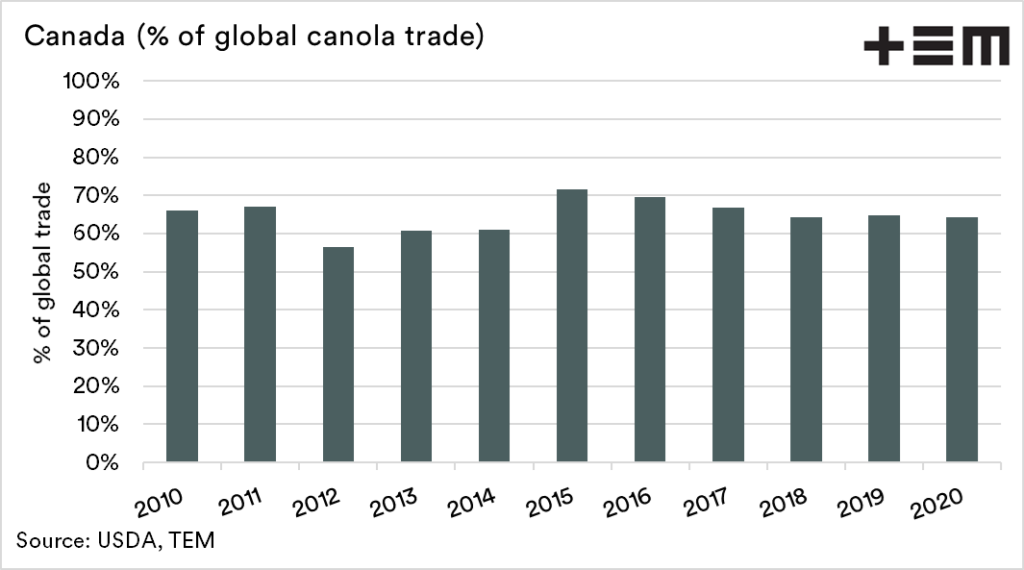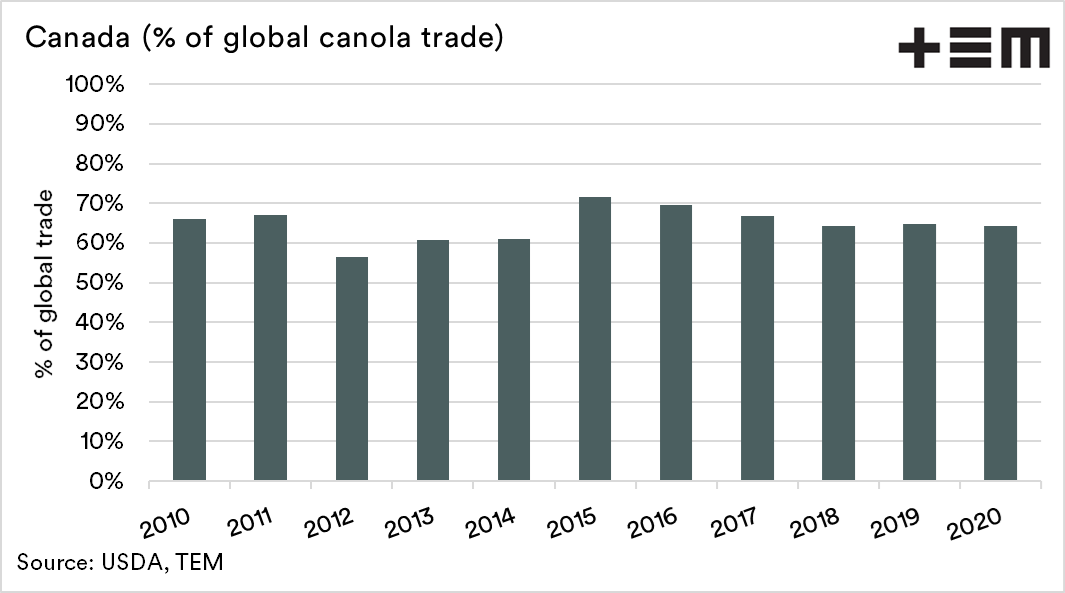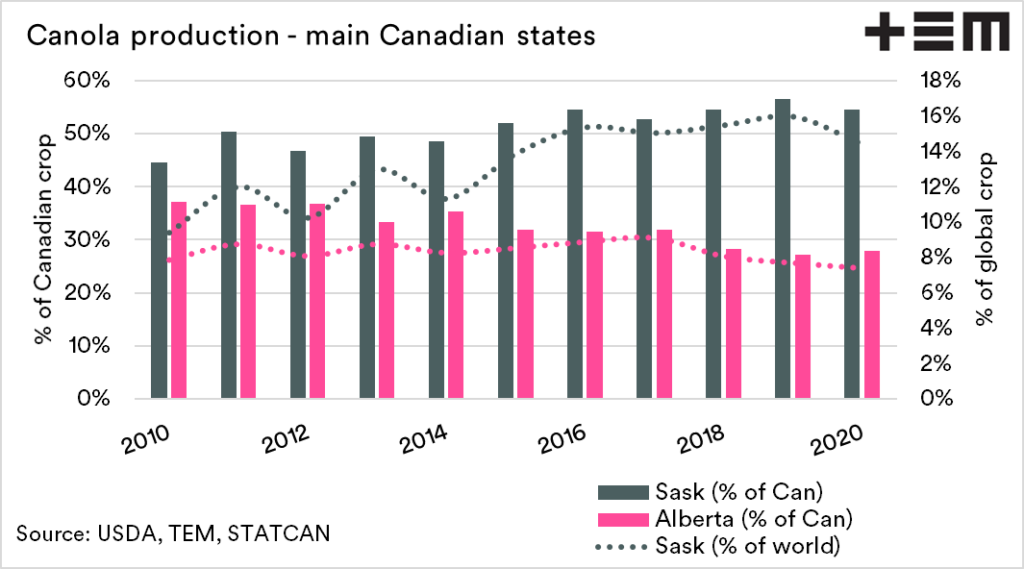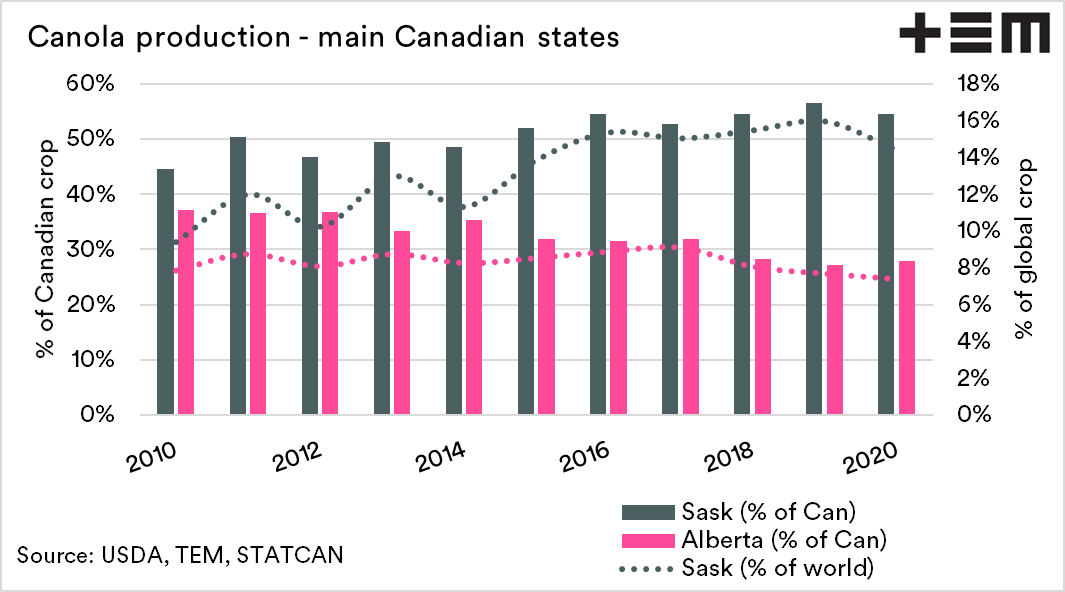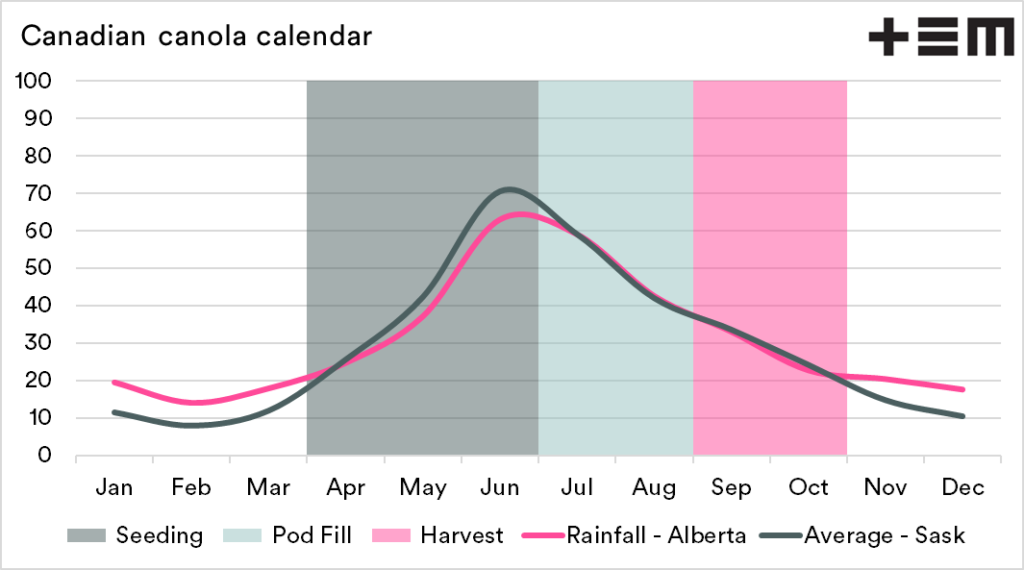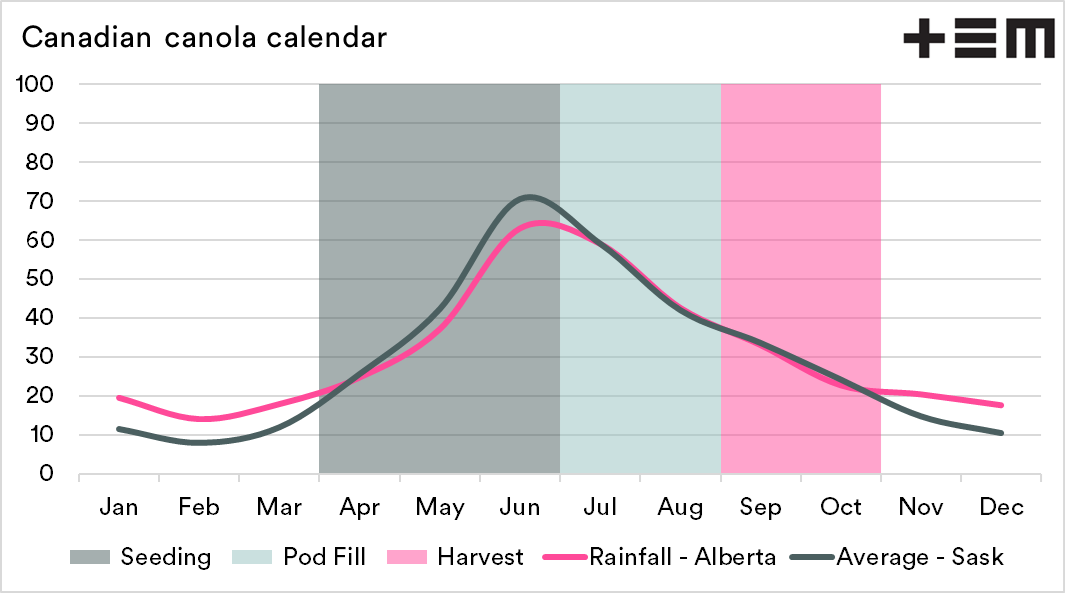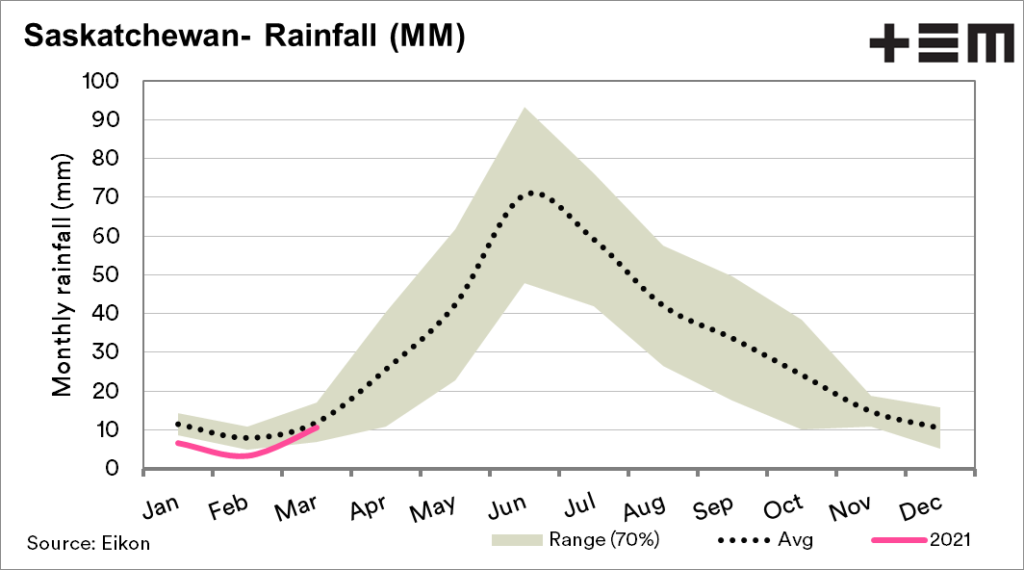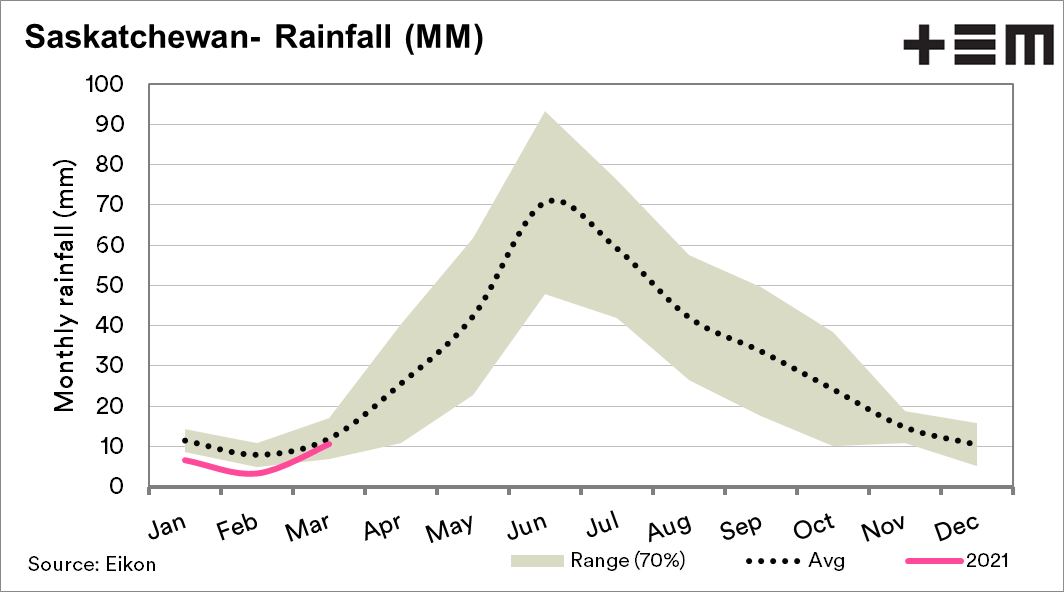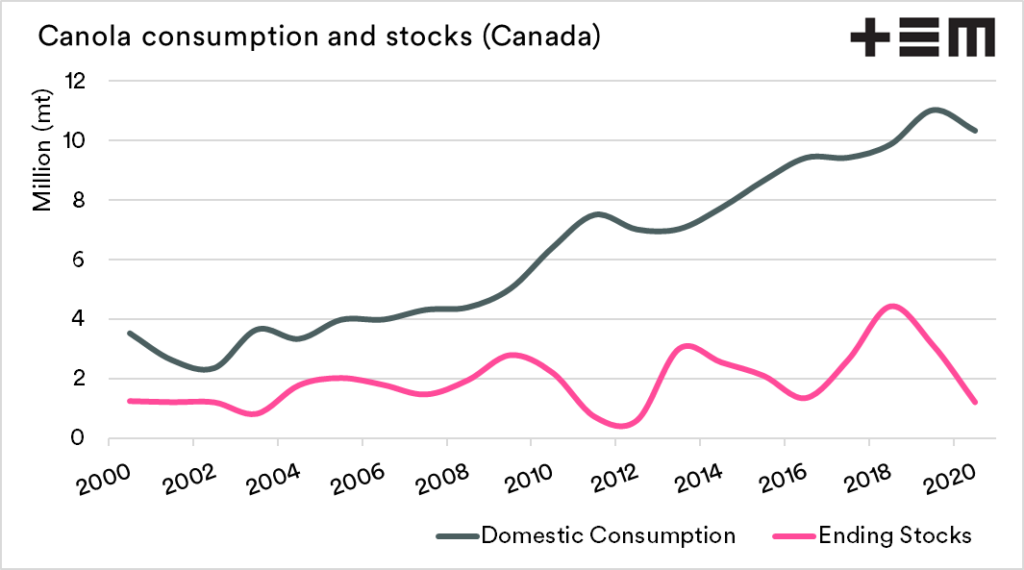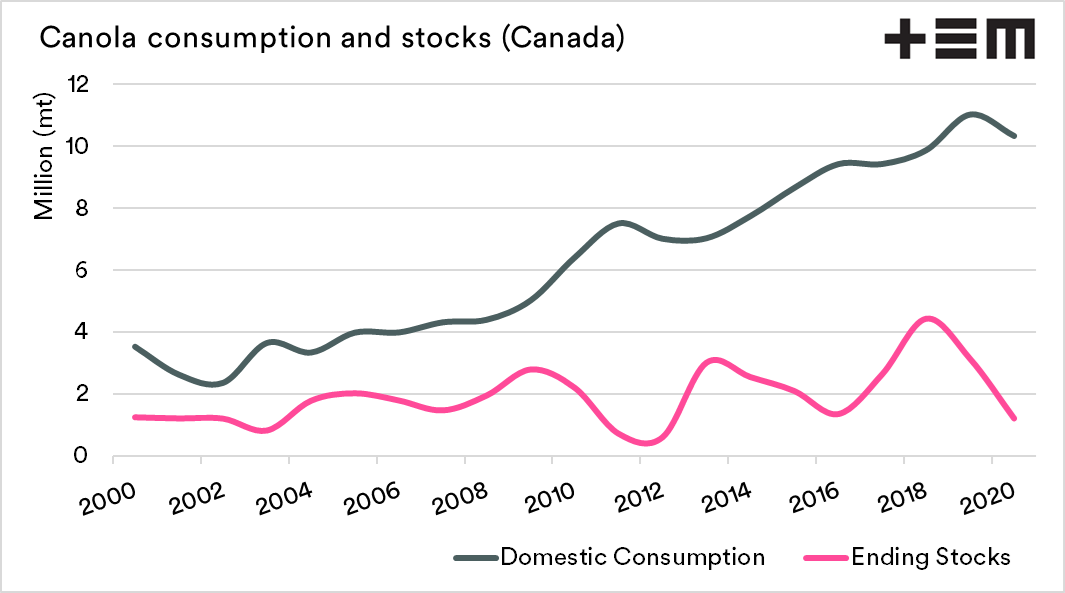Canada poutine on the fireworks

The Snapshot
- Canada is responsible for 65% of the global canola trade
- Two states (Saskatchewan and Alberta) produce on average 85% of the Canadian crop and 22% of the global canola crop.
- Conditions are currently sub-optimal in large parts of the canola growing area.
- Crop planting intentions will give us an indication of the coming crop, but there are concerns that growers will pull up on planting canola.
- Canada will have the lowest end stocks of canola since 2013. During the same period, domestic crushing has increased.
- Canola is going to be very tight ahead of the new season crop in Canada. So much so that there are rumours of imports.
- If the Canadian crop falls over this year, there will be fireworks.
The Detail
In the last week or so, we have concentrated on canola. This is due to the large moves in the market, and the potential, especially in light of the expected increased acres this year.
Demand is one driver of markets; in general, demand only increases by a small amount per year. Supply is the factor that causes the biggest moves in short to medium term. It is supply or lack of which will cause an imbalance between availability and consumption, and therefore higher pricing (or vice versa).
We saw this in recent years with the drought causing a deficit of feed on the east coast of Australia and consumers paying up to fill requirements.
If we are looking at canola supply, Canada is of paramount importance to the global supply. In the period 2010 to the present, Canada has been responsible for an average of 65% of global trade.
In Canada, the production of canola is overwhelmingly represented by two states. The hard to pronounce Saskatchewan and Alberta have produced on average 84% of the national crop since 2010.
On a global level, these two states produce 22% of the worldwide crop, and in turn, a large volume of potential global exports (see chart below).
Suppose these two growing regions experience poor conditions. In that case, this is liable to have enormous ramifications for the global canola crop.
The Canadian crop.
The Canadian crop is entering the planting phase and will be harvested typically in August/October. Whilst the crop is made with rainfall during June-August, the moisture levels during 2021 so far have been lower than average.
The result has been less than ideal conditions for seeding; this may cause some concerns and lead to some acreage being dropped. We will have more details as planting intentions are updated.
What are our concerns? More after the charts.
Our concerns
At the moment, Canada is due to have the lowest ending stocks since 2012, which in part is causing the current spike in pricing.
Local crushing in Canada has been increasing over the past twenty years. As we approach the 2021 harvest, things are getting very tight. There are even rumours of imports of Canada before the new season starts in order to meet the shortfall.
If the concerns related to the coming crop eventuate, then we could be in for some turbulence of the good kind.

